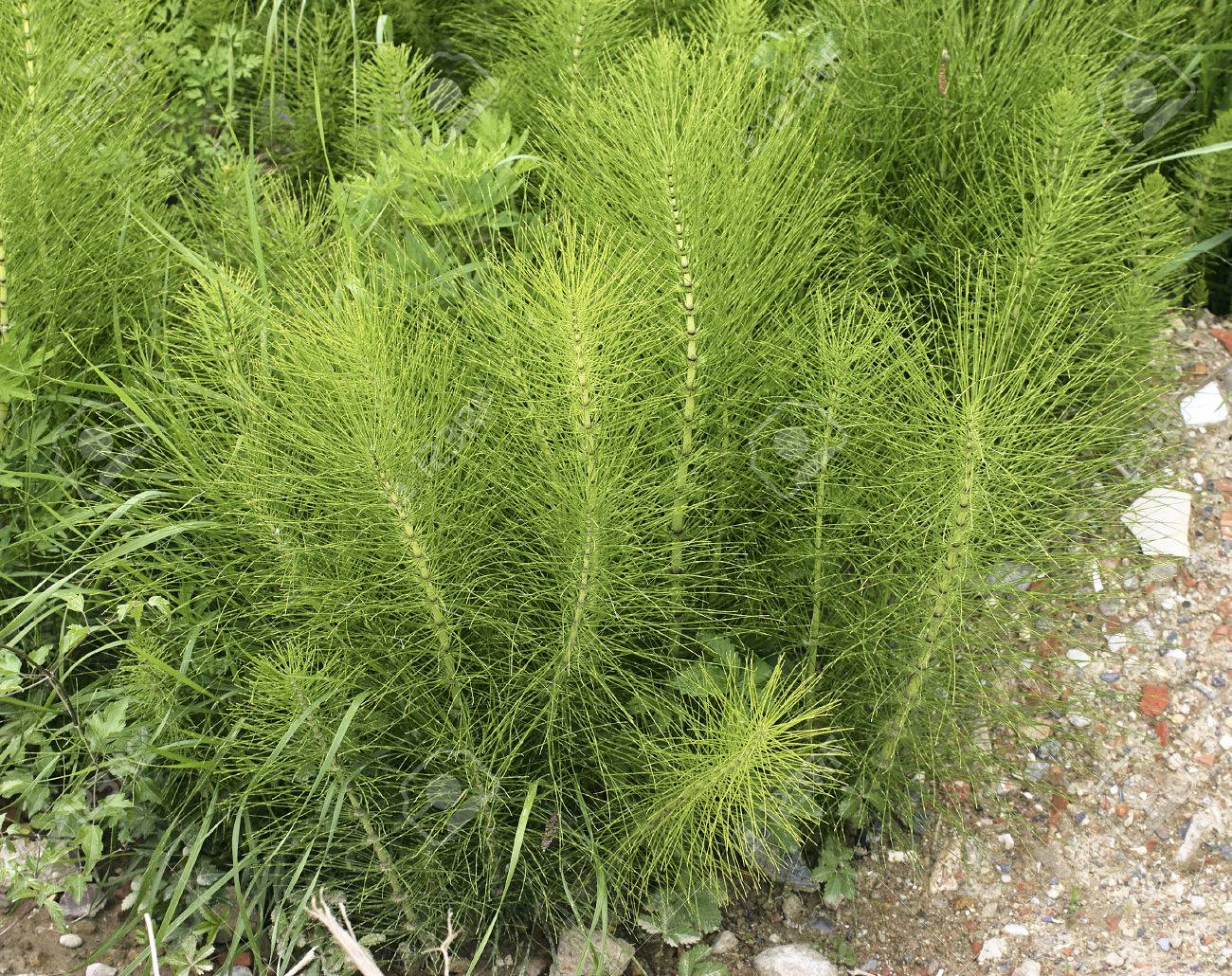Scientific Name: Equisetum arvense L.
Other Names: Shavegrass, Pewterwort, Nature’s hoover, Bottle-Brush, Corn Horsetail, Dutch Rushes, Field Horsetail, Horse Willow, Horsetail Grass, Horsetail Rush, Paddock-Pipes, Scouring Rush, Shave Grass, Toadpipe
Medicinal Parts
The medicinal parts are the dried green, sterile shoots and fresh sterile shoots, dried stems.
Keynote
Genito-urinary system (relating to the genital and urinary organs). A natural source of silicic acid, ashes containing 70 per cent silica soluble in water and alcohol.
Constituents
Flavonoids, alkaloids, sterols, silicic acid.
Effect
Horsetail has a mild diuretic and spasmolytic action in animal tests. The flavonoids and silicic acid contribute to the astringent effect.

Action
Haemostatic for bleeding of genito-urinary organs, styptic, a soothing non-irritating diuretic. Increases coagulability of the blood, remineraliser, anti-atheroma, antirheumatic, astringent, immune enhancer, white blood cell stimulator.
Uses of Horsetail
Blood in the urine, prostatitis, bed-wetting, dropsy, chronic bladder infections, arteriosclerosis, incontinence in the aged, catarrh of the urinary organs, gravel, urethritis of sexual transmission with bleeding, stricture, severe pain in the bladder unrelieved by passing water, constant desire to pass water without relief. A reported cure for carcinoma of the womb. Foetid (smelling extremely unpleasant) discharges of sexual transmitted diseases. Silica found in horsetail, preserves elasticity of connective tissue; controls absorption of calcium and is a necessary ingredient of nails, hair, teeth and the skeleton. Its cleansing properties rapidly remove urates, uric acid and cellulites from the system. It speeds up repair of tissue after lung damage from tuberculosis or other diseases.
Combinations:
(1) With Shepherd’s Purse for blood in the urine.
(2) With Pulsatilla to inhibit growth of uterine fibroid.
(3) With Buchu for cystitis.
(4) Combines well with Hydrangea for non-malignant prostatitis. (F. Fletcher Hyde)
Preparations
Horsetail has a heavy mineral content (silica, selenium and zinc) therefore treatment is best staggered so as to avoid kidney strain – one month, followed by one week’s break.
Average dose: 1 to 4 grams; thrice daily.
Tea: half-1 teaspoon to cup water; bring to boil; simmer for 5 minutes; infuse for 20 minutes. Dose: half-1 cup, cold.
Liquid extract: 1:1 in 25 per cent ethanol. Dose: 1-4ml (15-60 drops).
Home tincture: 1 part herb to 5 parts 25 per cent alcohol (gin, Vodka, etc). Steep 14 days, shake daily.
Dose: 2-5ml (30-75 drops) in water.
Poultice: Place 2 handful of herb in a sieve and place over a pot of boiling water (double boiler, etc). The soft hot herbs are placed between a piece of linen and applied to ulcer, adenoma (a benign tumour formed from glandular structures in epithelial tissue), cyst or tumour. (Maria Treben) Bath. 9oz leaves: bring to boil in 1 gallon of water. Simmer for 5 minutes; strain. Add to bath water.
Enema: 1 pint weak tea for infants with kidney disorders.
Compresses: 10g herb to 1 litre
Storage: Horsetail must be protected from light in well-sealed containers.
Contraindications
Horsetail is contraindicated in patients who have edema due to impaired heart and kidney function.
Precautions and Adverse Reactions
Health risks or side effects following the proper administration of designated therapeutic dosages are not recorded.
VIDEO: Dr Sebi’s Main Recommendation for Calcium
VIDEO: 3 Main Sources of Calcium Deficiency
References
Bartram’s Encyclopedia of Herbal Medicine by Thomas Bartram
PDR for Herbal Medicine by Joerg Gruenwald, PhD, Thomas Brendler, BA, Christof Jaenicke, MD etal
This article is copyrighted by Ital is Vital, 2025. Want to re-post this article? Visit our guidelines.
DISCLAIMER: THIS WEBSITE DOES NOT PROVIDE MEDICAL ADVICE
The information, including but not limited to, text, graphics, images and other material contained on this website are for informational purposes only. The purpose of this website is to promote broad consumer understanding and knowledge of various health topics. It is not intended to be a substitute for professional medical advice, diagnosis or treatment. Always seek the advice of your physician or other qualified health care provider with any questions you may have regarding a medical condition or treatment and before undertaking a new health care regimen, and never disregard professional medical advice or delay in seeking it because of something you have read on this website.

Pingback: What is Calcium Disodium (Synthetic Preservative)? - ital is vital